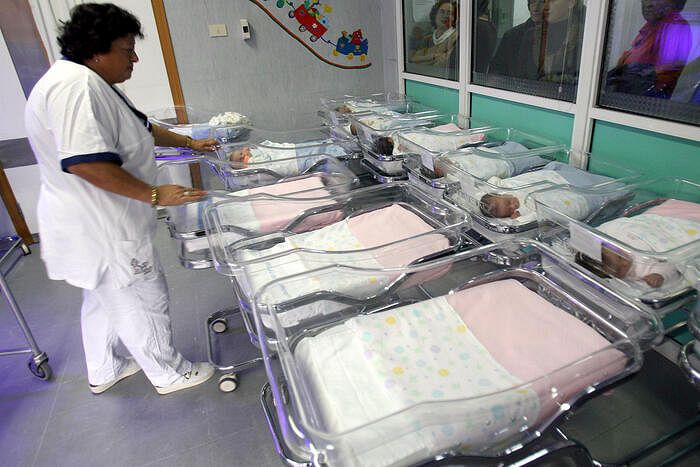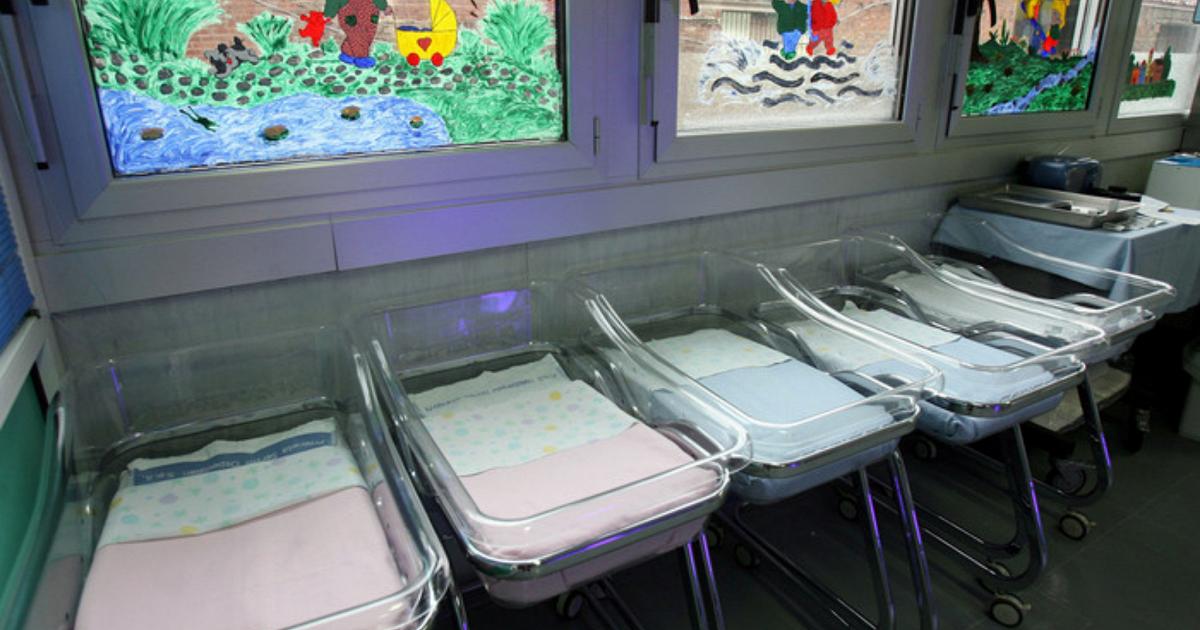Increasingly empty cradles in our country where the decline in births continues without interruption. This is what emerges from the demographic indicators relating to the year 2023 and published today by Istat.
According to provisional data, births residing in Italy number 379 thousand, with a birth rate of 6.4 per thousand (it was 6.7 per thousand in 2022). The decrease in births compared to 2022 is 14 thousand units (-3.6%).
Since 2008, the last year of increase in births in Italy, the decrease has been 197 thousand units (-34.2%). The average number of children per woman thus increases from 1.24 in 2022 to 1.20 in 2023, thus approaching the historic minimum of 1.19 children recorded in 1995.
The birth rate reduction applies without distinction to people born with Italian and foreign nationality. The latter, equal to 13.3% of the total number of newborns, are 50 thousand, 3 thousand less than in 2022. The decrease in the number of resident births in 2023 is determined both by a significant contraction of the fertility and by the decline in the female population of conventional childbearing age (15-49 years) fell to 11.5 million on January 1, 2024, compared to 13.4 million in 2014 and 13.8 million in 2004.
The male population of the same age, among others, also suffered the same fate during the same period, increasing from 13.9 million in 2004 to 13.5 million in 2014, up to 12 million individuals today.
The contraction in the average number of children per woman affects the entire national territory.
 (Pixabay)
(Pixabay) cradle
In the north increases from 1.26 children per woman in 2022 to 1.21 in 2023, in the center from 1h15 to 1h12. South, with a total fertility rate of 1.24, the highest among territorial divisions, it recorded a smaller decline from 1.26 in 2022.
In this context, the postponement of births begins again, a phenomenon with a significant impact on the general reduction in fertility, since The longer decisions about motherhood are delayed, the less time potential mothers have. After two years of strong stability, the average age at birth will rise to 32.5 years in 2023 (+0.1 compared to 2022).
This indicator, increasing in all areas, continues to record values in the North and Center (32.6 and 32.9 years) higher than those in the South (32.2), where however the greatest increase is observed in 2022 (was 32.0).
The turbulence is over pandemic and immediately post-pandemic phase, to which part of the irregular cyclical variations observed must be attributed, the decline in fertility seems to resume everywhere, accompanied by a new surge in postponement. North and South, after having recorded the same level of fertility in 2022, are diverging again. The South, after twenty years, found fertility higher than that of the Center-North.
It doesn't even support the birth rate anymore, at least not like before, theevolution of marriages, 183 thousand in 2023 (-6 thousand compared to 2022). Among these, those celebrated with a religious rite are in sharp decline (-8 thousand) while those celebrated with a civil ceremony are increasing (+2 thousand). Overall, in 2023 the marriage rate continues to decline slightly, reaching 3.1 per thousand compared to 3.2 in 2022. Southern Italy continues to be the area with the highest rate, 3 .5 per thousand compared to 2.9 per thousand in the north and center. But at the same time it is the area in which the contraction for 2022 is the most significant.
 HANDLE
HANDLE The beds of a maternity ward in an archive photo
Data region by region
Trentino-Alto Adigewith an average number of children per woman of 1.42, continues to hold ithe primacy of fertility the highest in the country, although it is one of the regions where the negative development is the most significant compared to 2022 (1.51). They follow Sicily and Campania, with an average number of children per woman of 1.32 and 1.29 respectively (compared to 1.35 and 1.33 in 2022). In these three regions, new mothers are on average younger than in the rest of the country: the average age at birth in Sicily is 31.7 years; 32.2 years in Trentino-Alto Adige and Campania.
Sardinia remains the region with the lowest fertility. Stably placed below the level of one child per woman for the fourth consecutive year, it stands at 0.91 children in 2023 (0.95 in 2022).
Two other regions in southern Italy precede it: Basilicata, where the average number of children per woman increases from 1.10 in 2022 to 1.08 in 2023; Molise remained stable at 1.10. Sardinia and Basilicata are, with Lazio, the three regions in which the the reproduction schedule is more postponedwith average ages at birth of 33.2, 33.1 and 33 years respectively.
In the generalized panorama of low and late fertility, extended to all regions of the country, with slight differences between the three divisions, conditions of heterogeneity appear, even within the same geographical division. In the South, for example, regions with higher fertility (Sicily, Campania and Calabria) and regions with a minimum level (Sardinia, Basilicata and Molise) coexist.

